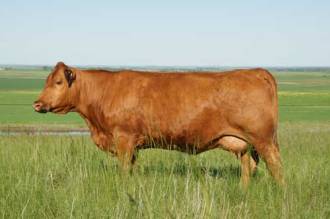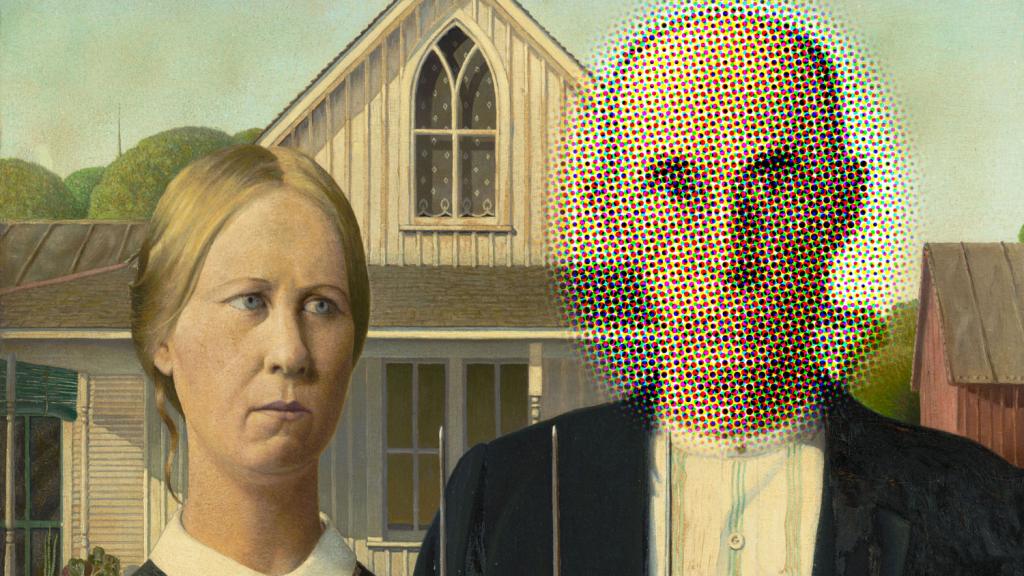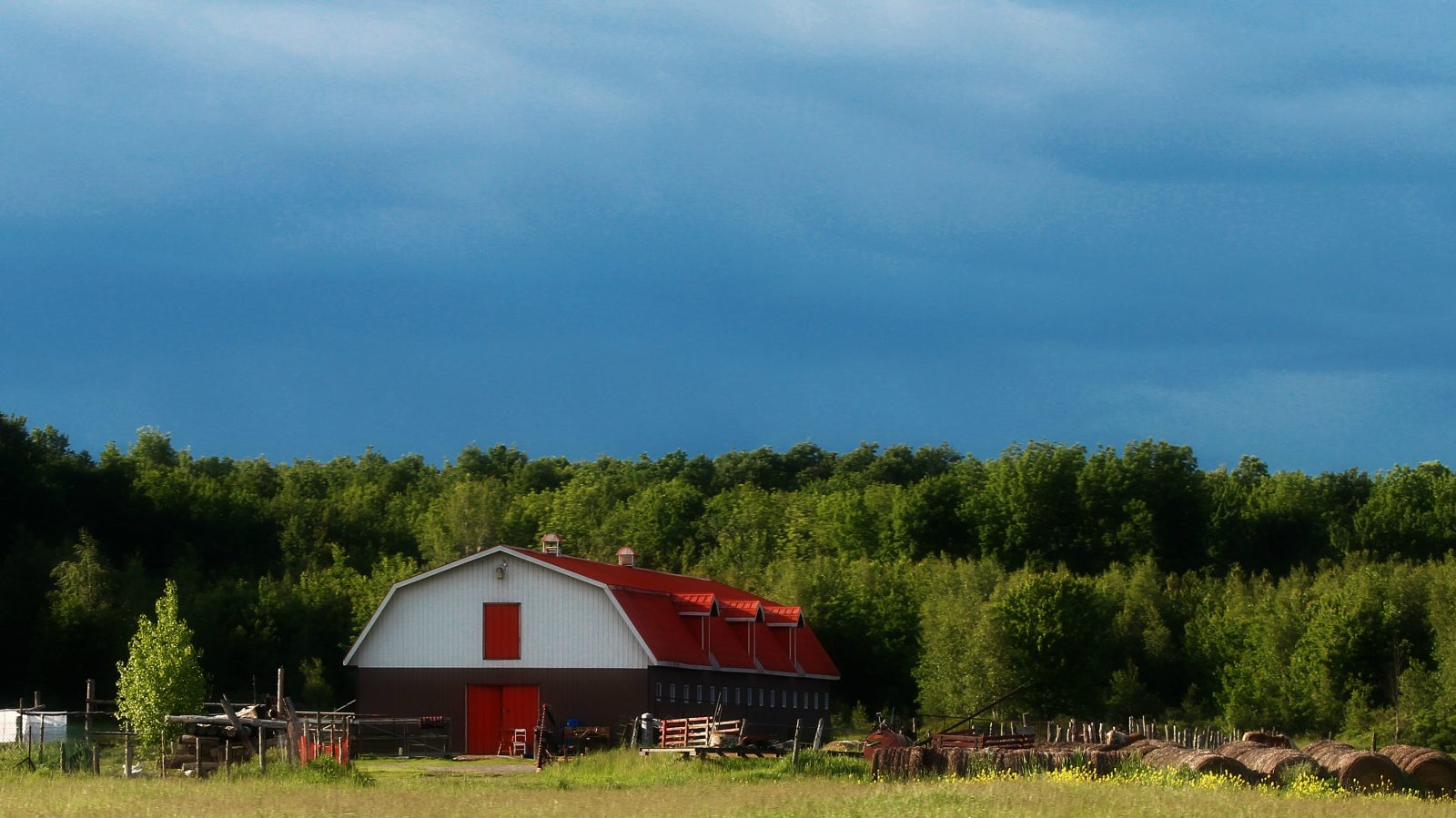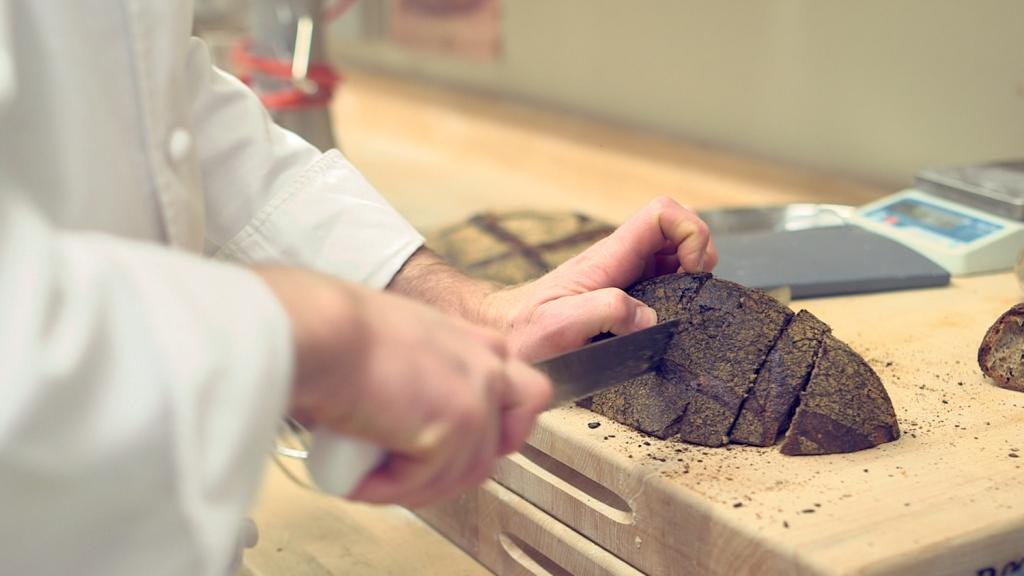Mid-sized farms are getting squeezed out of our food system. And there’s a story behind every single one of those numbers. Here are two stories: one about losing the farm — and one about hanging on and making it pay.
(Music from Josh Woodward and Podington Bear. Thanks for making your stuff available and opting out of the ridiculous U.S. copyright system. You guys rock.)
Traci and Brian Bruckner

Brian, Traci, and Sam Bruckner.
Brian Bruckner grew up on a farm in Nebraska. It had beef cattle, dairy cows, and pigs. They grew corn, soybeans, alfalfa, and had some grazing land for the animals. There was enough going on that if hog prices fell, or it was a bad year for corn, there was something else to carry the family through.
“My parents raised six children on a 400-acre dry-land farm,” he said. “They succeeded at that, you know? But they had no extra cash to help us get started, and we weren’t expecting that.”
Bruckner’s parents were just about ready to retire when he graduated from high school, so he and a brother took over the farm. Things were going pretty well. He got married and settled in. Then he took out a loan to buy a nearby hog farm.
[grist-related-series]
“I was in debt approximately $200,000 at the time, which was an awful lot of money,” Bruckner said.
And things started to go wrong. Bad weather hurt the crops. The pigs kept getting sick. Brian acknowledges that he probably made some bad decisions, but he also had more than his share of bad luck. But the real problem, according to Brian’s wife, Traci Bruckner, was that the bottom dropped out of the hog market.
“What really, really damaged us and made it impossible for us to really survive was the consolidation of the hog market.”
After years of soaring growth, pig prices crashed. At the same time, big companies were buying up slaughterhouses, so there were fewer companies a farmer might sell to. Farmers had to accept whatever price they could get. They were losing money on every pig, and the Bruckners couldn’t afford to lose money very long.
“Those things just snowball on themselves, and it really got tough sledding. It was a stressful point in our lives,” Brian said. Then the bank pulled the plug — it took the hog farm and their house. Brian was working on the farm, and doing construction. Eventually, he and Traci walked away, leaving the family farm to his brother.
“Oh man, that’s a rollercoaster of emotions. There was, when I think back, there’s a lot of things I don’t want to remember because there was a lot of anger, too,” Traci said.
There was anger, but also hope for something better. Brian went to college, then got a job doing groundwater management. After learning from this experience, Traci started doing farm policy work for the Center for Rural Affairs. And she says that government policy stacked the deck against small farmers like them. For one thing, government subsidies give the big farms an advantage over the small, and drive up the price of land. “We live in an area where a majority of the people think they don’t want government interference in their lives at all,” she said. “Yet, the government is subsidizing just about every decision they make.”
And then there’s the matter of consolidation. The government has declined to pursue antitrust actions and break up big companies. It’s hard to do that when food prices are falling. The Obama administration’s line has basically been: “hey, if it’s good for the consumer …”
“I think we should worry about what’s good for rural communities,” Traci said. “The way it leads to the consolidation to agriculture is not healthy for rural communities, and in the end it’s not healthy for consumers, either.”
The Bruckners’ experience has left them with the sense that a farmer just can’t compete in the mass market without the money to grow large, and they’ve been sure to tell as much to their son.
“He grew up on the farm for a little while. He was 5 when we moved to Wayne,” Traci said. “And he’s in 4H, and we have some cows yet, maybe five or six cows that we breed out, little Herefords, and he loves them. He always said he wanted to be a farmer and that’s changed now that he’s growing up, he’s going to be 15 next week. But I’ve always told him, Sam, if you want to farm, you need to think about something highly diversified that allows you to dictate what your market is. You cannot be a John Deere tractor driver, combine driver, and expect to make it, because there’s just no room for someone with no money.”
The thing is, there are a lot of other options besides being a John Deere tractor driver and selling your food at a market price. There are premium markets emerging that give farmers more money and offer a new niche for mid-sized farms.
“I wish I could’ve seen into the future,” Brian said. “If I’d have kept raising hogs the way I was raising them, I would’ve had a market for my hogs through organization such as Niman Ranch. But I guess that’s encouraging to me, that those things are available for farmers who want to do things in that manner and that there’s a market for them and it’s a profitable market as well.”
Mass market farms are getting bigger, and as they do, there will be more people, like the Bruckners, pushed out. The economics work like an implacable ratchet. But at the same time, the demand for premium products, like Niman Ranch pork and organic grain, is expanding. And that could be the force that reinvigorates mid-sized farms and rural communities.
Gabe Brown

A cow on Brown’s ranch.
Rancher Gabe Brown has figured this out — he’s proof that there really is a place for mid-sized farms in modern America. He lives near Bismarck, N.D.
“Well, I was actually born and raised in town, in the city of Bismarck,” he told me. “At a young age, in junior high school I started taking vocational agriculture, got interested in agriculture, started working on different farms and ranches, worked at the dairy barn at the university and put myself through college. Then I was fortunate enough that I married a farmer’s daughter and he didn’t have any sons, so I was able to get into ranching that way.”
But Brown almost lost the family ranch — things just weren’t working out financially. The price of cattle kept falling, and his costs kept rising — especially the cost of the things he used to help his crops grow.
“We were having to use more fertilizers, more pesticides, but our costs were ever increasing, our margins were being squeezed tighter and tighter. Then in our particular case, what happened is the years 1995 through 1998, we went through a period of three years of hail and a year of drought, which economically more or less just devastated us. And the banker, although I’m grateful he didn’t foreclose on me, he wasn’t going to loan me any more money.”
Around this time Gabe Brown started learning about the holistic grazing guru, Allan Savory, and no-till farming master Duane Beck. Brown saw common thread between these and various other thinkers. They were all learning to farm in ways that borrowed tricks from functional ecosystems. So he stopped disturbing the soil with a plow, and made sure that the ground was always covered with some grassy armor, locked in place with its roots.
“You know, the soil is alive,” Brown said. “It’s just that our management, over the last 60, 70 years, has turned it into a sterile petri dish, more or less. All I’m trying to do is mimic nature. I’m not doing anything that hasn’t been done for eons of time.”
Because Brown doesn’t buy fertilizer or pesticides, his costs are low — it only costs him $1.44 to produce a bushel of corn. And how does that compare to the industry standard?
“Nationally, the cost to produce a bushel of corn is close to $5 a bushel,” Brown said.
That’s how much it costs to grow the stuff. But the price of corn is now around $4 a bushel. Which means most farmers are losing money on every kernel they sell. Not Brown:
“With all of our costs in there, from land-rent to seed to the seeding to the harvesting to the trucking it to market, we had a $1.44 cost per bushel for corn,” he said. “Same on the livestock, this past year it cost us $1,241 to take a beef animal from birth until harvest. Well, that’s considerably lower cost than they can do at any of the feedlots in the current conventional model. And then in turn, it’s our belief that as we focused on the soil resource, you know the soil is going to have — a healthy soil ecosystem will have more nutrients moving throughout it. Those nutrients will be in the plants, be eaten by the animals. We will have more nutrient-dense products. Now we’re selling our products directly to the consumer. And we’re getting paid at premium for them.”
Brown’s food is between 30 and 50 percent more expensive than mass market products. And I had to ask him, if his cost of production is really so low, why sell it at a premium?
“It’s supply and demand,” he said. “Some may say, Oh, but Gabe, you should mark your product down and sell it for less. I’ve spent the last 20 years building the health of my soil so I could have this premium product — I think I deserve a premium price. The market will tell me, and dictate what price I can get. For instance right now locally you can buy a dozen eggs for $1.20 to $1.50 a dozen. My son sells his for $4 a dozen and people stand up an hour before farmers market opens to buy those eggs. That tells us that there’s a real demand.”
To capture a greater share of the food dollar and sell directly to his customers, Brown isn’t just a farmer: He’s a shop keeper, a trucker, and a marketer. And he spends a lot of time talking up his products, and people are eager to hear about them. He says he turns down 10 speaking offers for every one he accepts. He spends the entire winter flying to gigs — while his wife and son take care of the ranch.
Brown’s figured out a working formula and been richly rewarded for it. But the biggest reward, he says, is in making a difference and seeing people come around. People like his in-laws, who used to be pretty skeptical of his methods.
“Well, unfortunately, my in-laws retired there when we bought the ranch and unfortunately they passed away since then,” Brown said. “But I’ll tell you this story. When I went to no-till, my father-in-law was not at all happy with his son-in-law, and he more or less told me that. You know, but he was kind about it. But in 2003, the year before he passed away, he asked my wife to get the camera and take a picture of him and his grandson, my son, standing in one of our corn fields, because he was so proud. He had never raised a crop like that himself. So, he knew then that I was on the right path.”
There are two important innovations that Gabe Brown has made. First there’s the technical innovation: figuring out this no-till holistic grazing system. The second is a business innovation: figuring out how to appeal directly to final customers and convince them that his product is worth a premium. Now, the thing about technical innovations is that they can always be scaled up. Lots of other farms, and bigger farms, can do the same thing. So this won’t be a panacea for mid-sized farms forever.
But his second innovation, the business innovation, could be the answer. There’s little future for mid-sized farms in the mass market. But, as a farmer, if you can convince eaters that you do an especially good job as a steward of the land and of their health, they’ll be happy to pay you for that.



